The Economics and Statistics Division maintains archives of previous publications for accountability purposes, but makes no updates to keep these documents current with the latest data revisions from Statistics Canada. As a result, information in older documents may not be accurate. Please exercise caution when referring to older documents. For the latest information and historical data, please contact the individual listed to the right.
<--- Return to Archive
For additional information relating to this article, please contact:
May 31, 2023HOUSING STOCK, Q1 Starting today, Statistics Canada is releasing a new data table on housing stock as part of the quarterly economic accounts. This stock is measured in number of housing units.
Quarter-over-quarter (Q1 2023 vs Q4 2022)
As of Q1 2023, Nova Scotia had a housing stock of 483,919 units, up 0.24% from Q4 2022. Nationally, housing stock was 16,635,843 units, up 0.31% from Q4 2022. All provinces reported a rise in housing stock, with the fastest gains in British Columbia, Alberta and Manitoba. The slowest growth was in Newfoundland and Labrador.
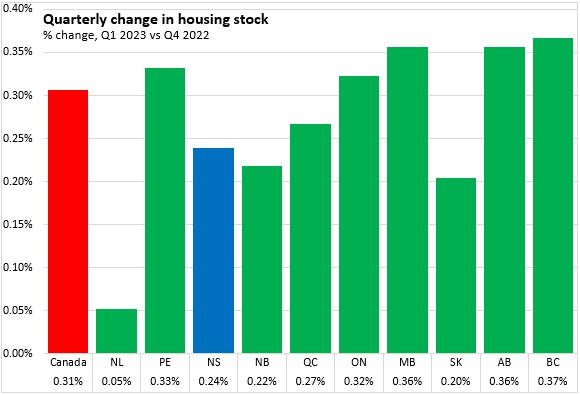
Year-over-year (Q1 2023 vs Q1 2022)
Compared with Q1 2022, Nova Scotia's housing stock has grown by 0.9%. National housing stock has grown by 1.2% with gains in all provinces, led by British Columbia, Alberta and Manitoba. Newfoundland and Labrador lags other provinces in housing stock growth.
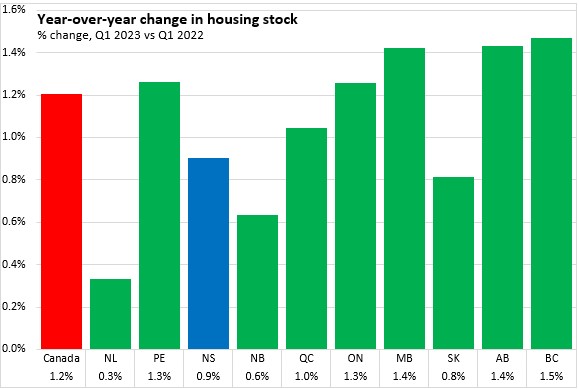
Trends
Nova Scotia's housing stock amounts to 466.3 units per 1,000 residents. Although this is the third highest among provinces (after Newfoundland and Labrador and Québec), Nova Scotia's stock of housing has grown more slowly than the population. This has resulted in falling units per 1,000 residents in the province, particularly since 2020.
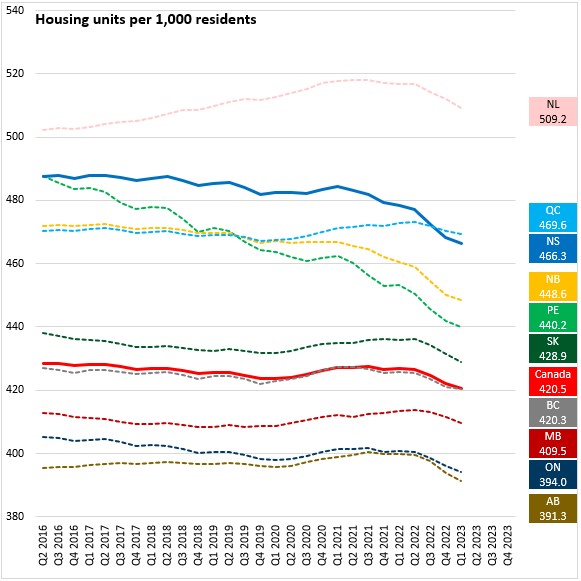
Composition of housing stock (Q1 2023)
Nova Scotia's housing stock includes 296.2 units per 1,000 residents of owned stock, 166.5 units per 1,000 residents of rented stock and 3.6 units per 1,000 residents in band housing stock. All are higher (per 1,000 residents) than national averages.
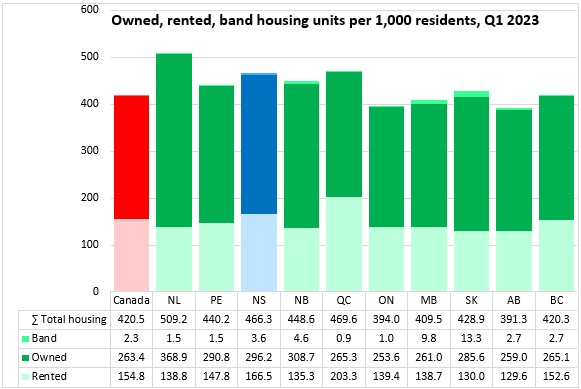
Compared with national averages, Nova Scotia's housing stock consists more of single houses (299.0 units per 1,000 residents) and less of apartments (116.3 units per 1,000 residents). Nova Scotia also has more mobile homes per 1,000 residents than the national average, though this is only 3.7% of the province's housing stock. Newfoundland and Labrador reported the highest stock of single houses per 1,000 residents while Quebec reported the highest stock of apartments per 1,000 residents.
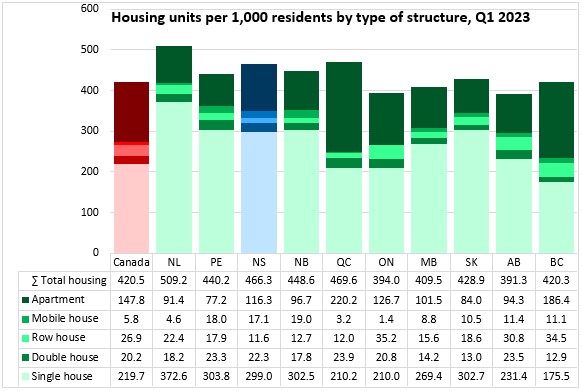
The overwhelming majority of housing units are occupied by a usual occupant (90.6% in Nova Scotia, 92.1% in Canada). A further 8.9% of units in Nova Scotia were unoccupied (7.5% nationally). Only a small portion of housing units were occupied, but not by a usual occupant.

Privately-held housing amounted to 93.5% of Nova Scotia's housing stock (94.5% nationally). Nova Scotia did report more units of social housing stock per 1,000 residents than the national average.
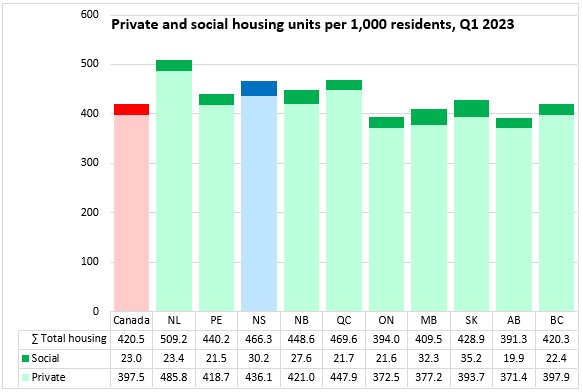
Source: Statistics Canada. Table 36-10-0688-01 Housing stock in unit by institutional sector, housing type, dwelling occupation, dwelling type, and tenure type; Table 17-10-0009-01 Population estimates, quarterly
<--- Return to Archive